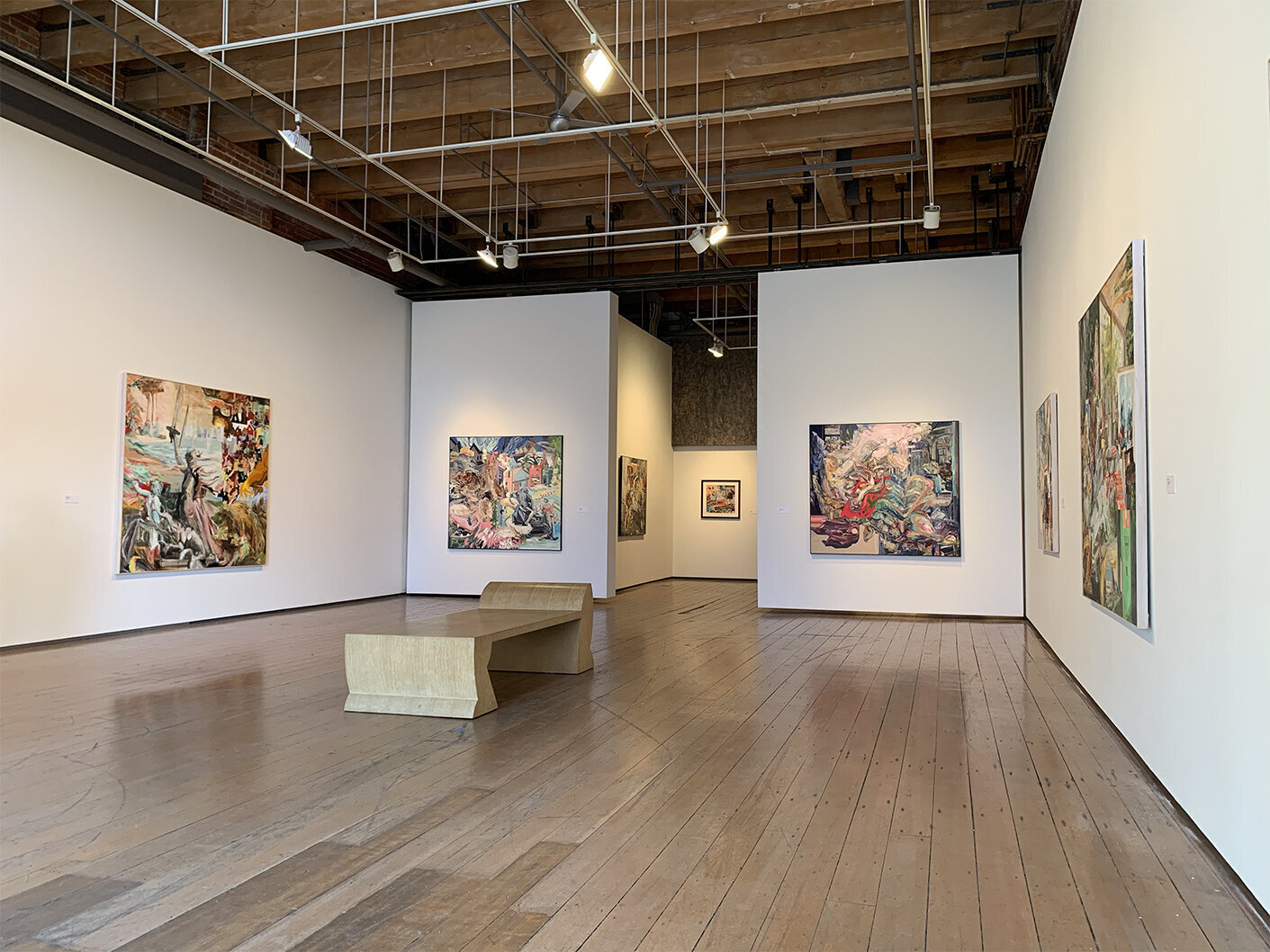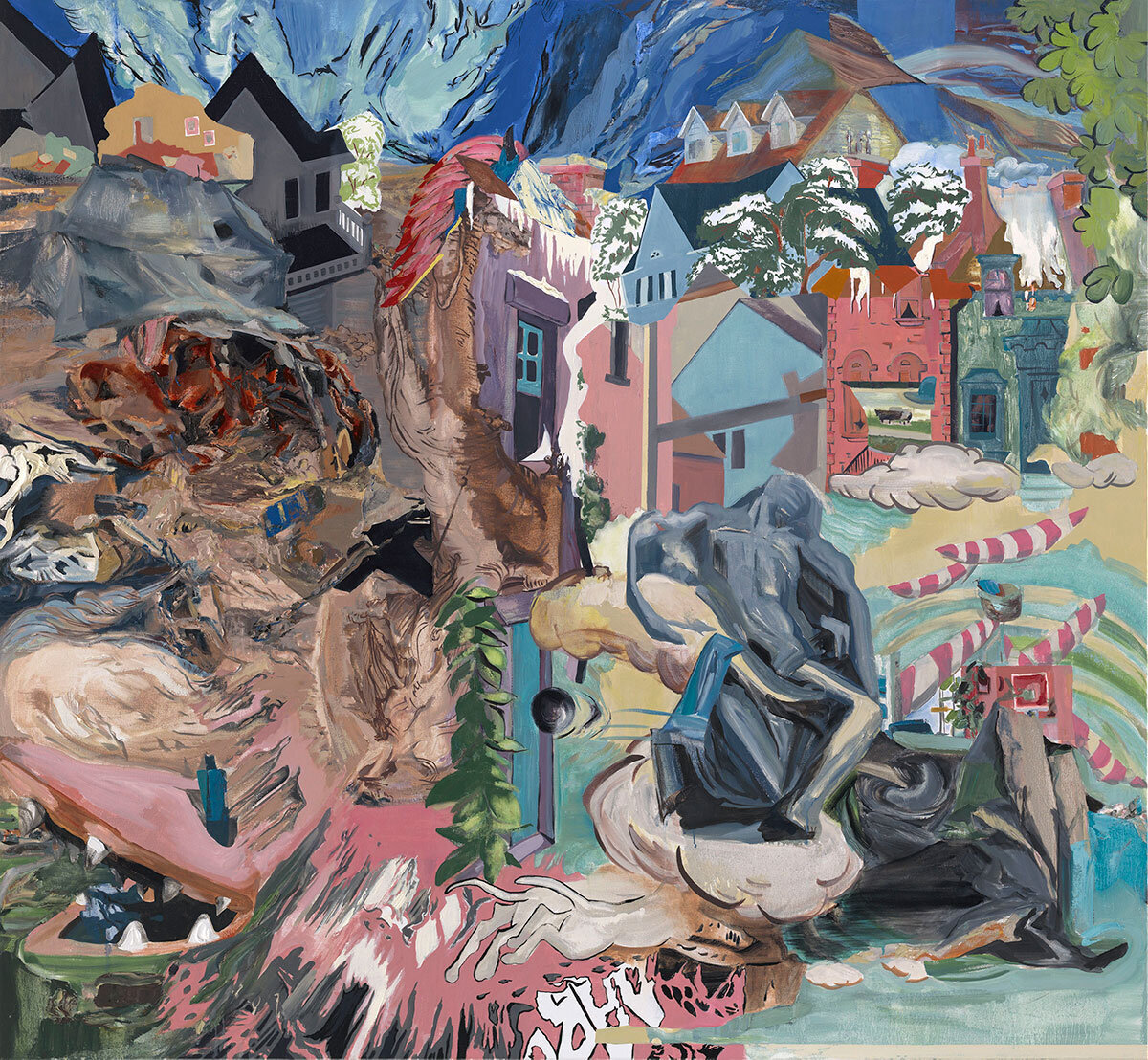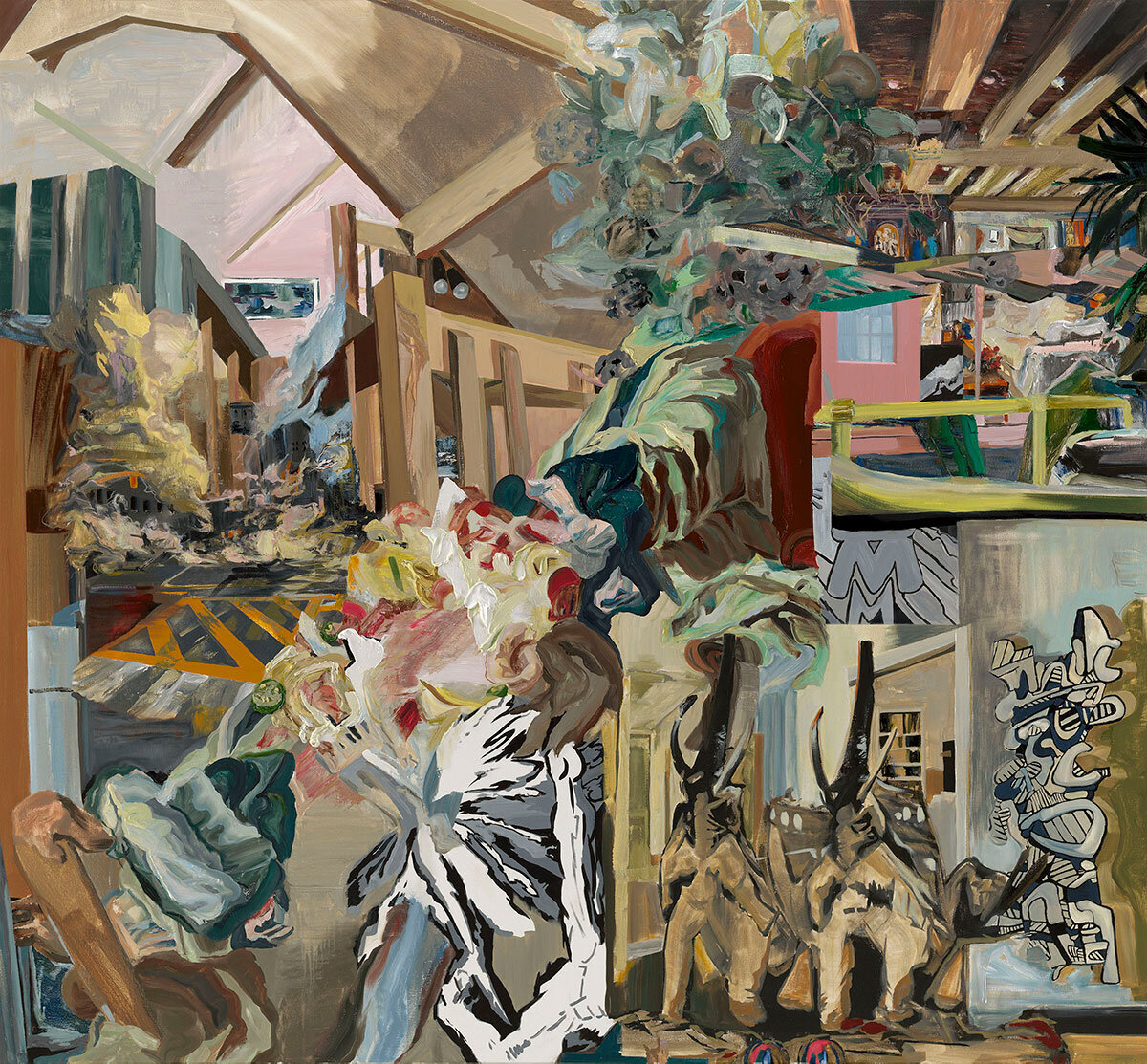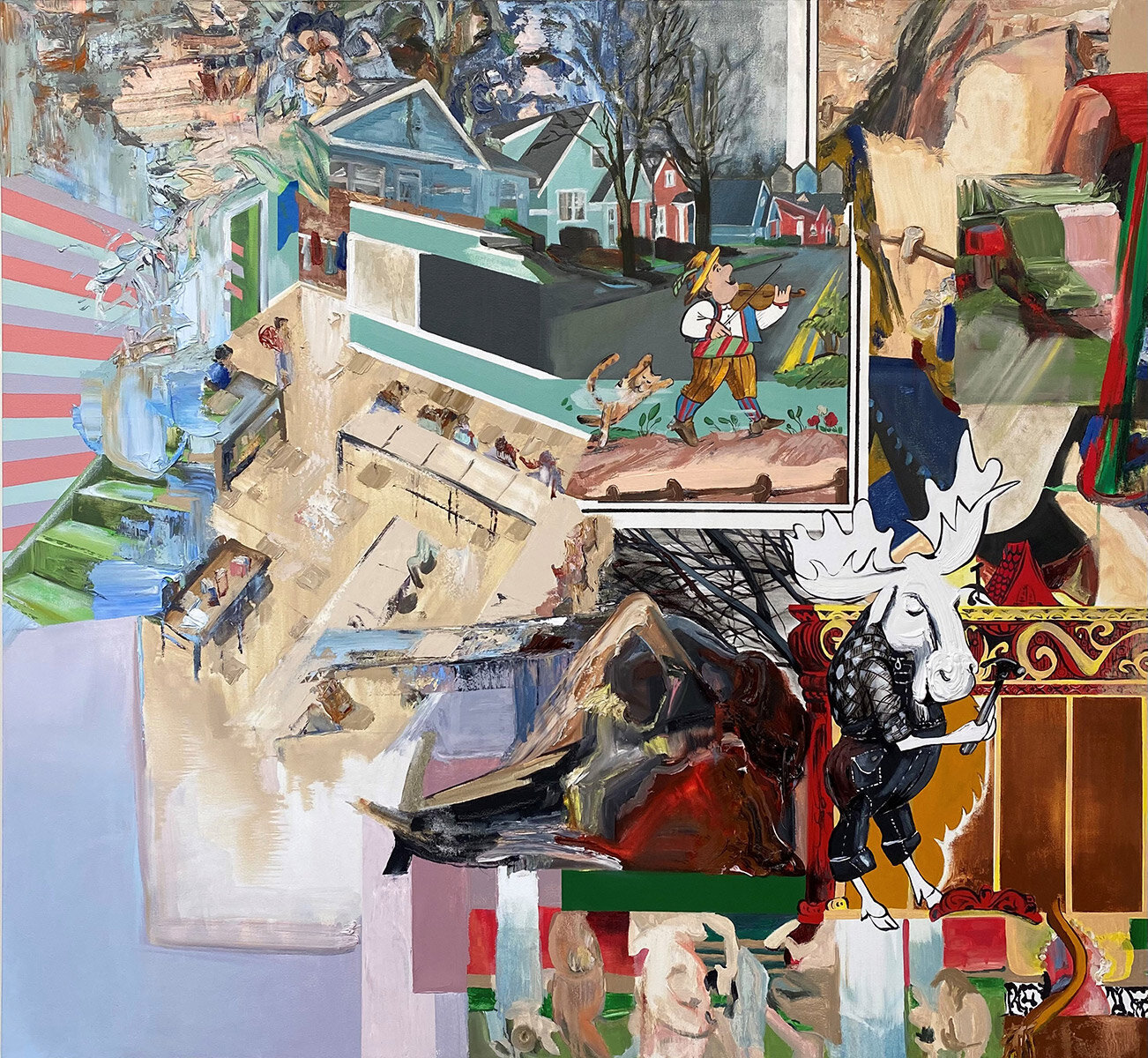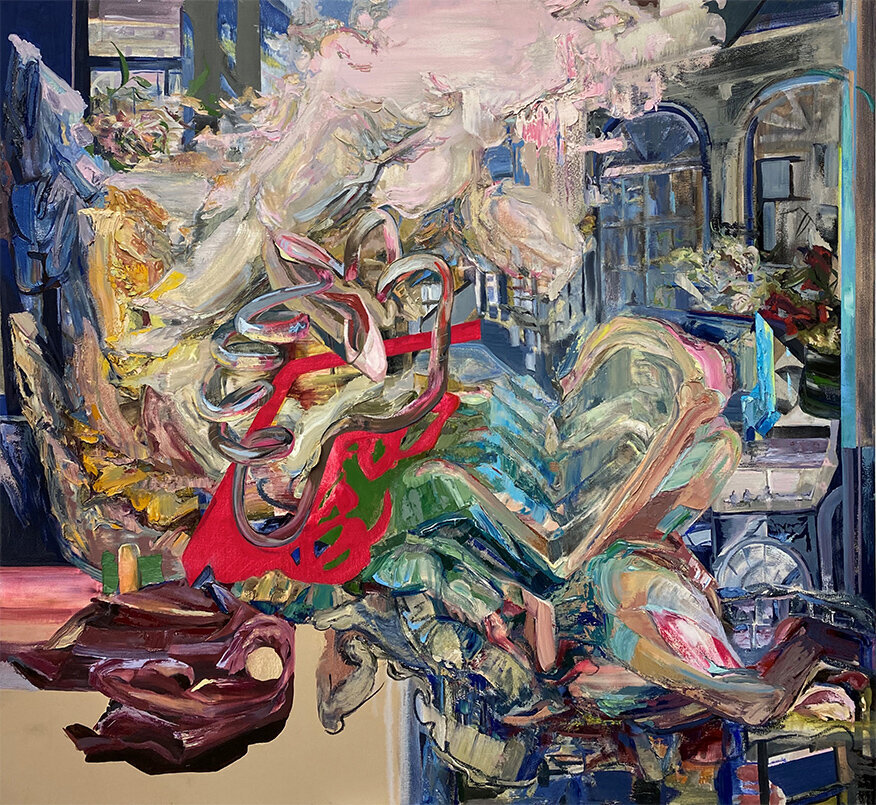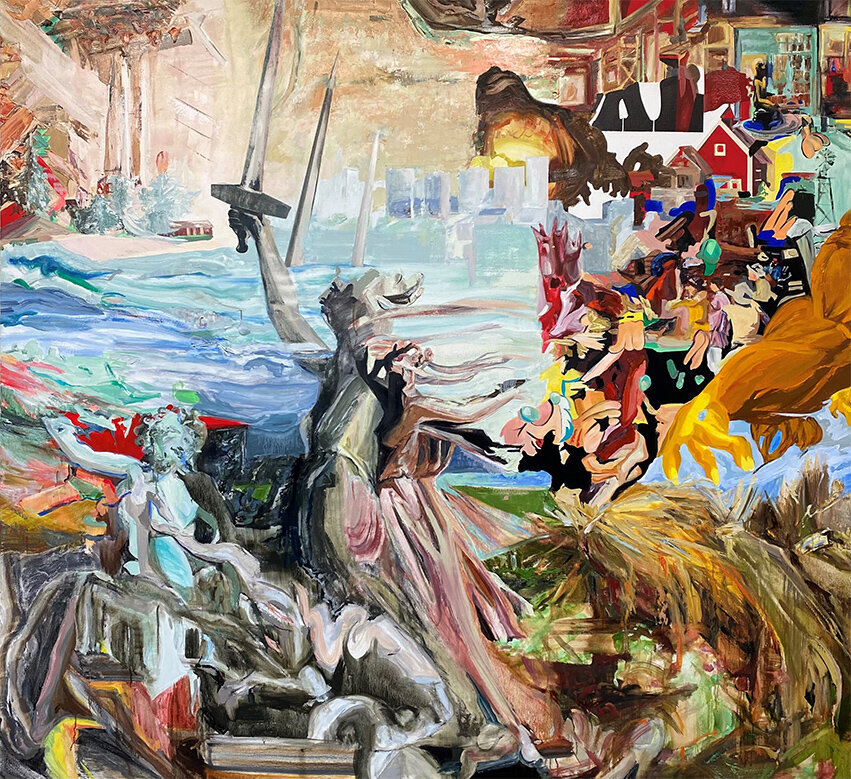Churning: Drie Chapek at Greg Kucera Gallery
May 5, 2021
Rid yourself of absolutes. Purity is a tyranny of the abstract. Everything is in flux: in darkness there is always light but equally true is that pleasure is always accompanied by pain. No pure state exists. These are the hard-won lessons on full display in the paintings of Drie Chapek, showing now at Greg Kucera Gallery in Seattle. Chapek says that she is using “pattern and color to relate pain and pleasure as they coexist.” Lauren Gallow writes in the exhibition essay that Chapek’s paintings “give physical form to the deepest paradox of life: that we are alive and dying at the same time.” This is true of all life, of all species, and the human species does seem unique in its ability to understand this paradox. And while mid-century existentialism may have given rise to despair because all life contains death, the era of climate collapse would seem to be ushering in an age of exuberance, joy, and hedonism as if we are all defiantly searching for life and levity amidst the carnage. Even ‘YOLO’ insists on life as a foundational principle.
Churning (Installation View), Greg Kucera Gallery, 2021
INSIDE OUT, Oil and acrylic on canvas, 60” x 65” ,2020
Chapek draws on a broad painting vernacular from graphical lines, illustrative flourishes, flat pop-infused areas of color, bold patterns, all balanced with thick, gestural, expressive strokes of paint. This painterly dexterity is fully evident in INSIDE OUT, pictured above. The pastel color pallet stands out, eliciting vibes of utopia, candy shops, and childhood. The top edge of the canvas shows a sky churning sky reminiscent of Van Gogh’s blue swirling night skies, and opens up a vast space within the composition. The sky is immediately foregrounded by a series of angular, fractured looking buildings, which is then foregrounded by more explosive forms. Kayaks swirling in water. A contorted gray figure. The contour of running dogs. A “piranha plant from Mario,” as my son pointed out. And through it all, flying across a field of yellow and blue, is a single cannonball headed towards the left side of the canvas— a large area of earth colors looking like the excavated pit of a city lot under construction, a littered ravine, or even a wartime trench. It’s as if beauty itself is an invitation to its own destruction.
TWIST DISSIPATE, oil and acrylic on canvas, 60” x 65”, 2020
RECEIVE RESPOND, oil and acrylic on canvas, 72” x 76”, 2020
Again, Chapek plays with expansive versus shallow forms in RECEIVE RESPOND, this time utilizing the interior space of a loft with a raftered ceiling to pry open a deep space within the frame. She then fills that deep space with areas of stylistic flourishes and explosive, gestural bursts of paint. The deep space of the interior becomes a stage for the paint-as-paint to communicate things more raw than representation allows. The closer to the foreground the paint becomes, the less rendered or representational it is, culminating in thick globs of white right near the center. The whole thing reads like a fever dream, one where asphalt and crosswalks stealthily merge with your bedroom floor just before the whole scene explodes into illegible strokes of color.
ROOM FOR A WALK, oil and acrylic on canvas, 48” x 52”, 2021
CHURNING DECADENCE, oil and acrylic on canvas, 60” x 65”, 2020
CHURNING DECADENCE stands out as one of the most gestural action paintings in the show, although it still, like the others, pries open a deep space as a stage for painterly expression. This time the interior is a series of arched blue windows and hallways reminiscent of a sunny chateau. The bottom left corner shows an unusually large and flat area of light sienna, on top of which rests a fleshy, bloody looking lump, not unlike some of the wild fleshy lumps painted by Francis Bacon. The playful, swirling gesture in the middle, painted again in fleshy colors, elicits bodies and guts. As Gallow articulates, “Each of Chapek’s deliciously layered oil paintings captures the visceral weight of the human experience and the constant, grotesque decay of the physical body.”
STAND UP WITHIN, oil and acrylic on canvas, 72” x 78”, 2021
Drie Chapek: Churning is up through May 29th. Mask up. Go Go Go. Let yourself be moved.
LINKS:

